Qinghai Province, located in northwest China, is a land of sweeping plateaus, crystal-clear lakes, and deeply rooted ethnic cultures. Known as the “Gateway to Tibet,” this vast region is home to the source of the Yellow River and some of China’s most breathtaking high-altitude scenery. Its capital, Xining, serves as a modern hub for travelers venturing toward the Tibetan Plateau.
Though sparsely populated, Qinghai’s cultural and ecological diversity is unmatched. From pristine salt lakes and rolling grasslands to Tibetan monasteries and nomadic traditions, Qinghai offers an unforgettable journey into China’s wild west.
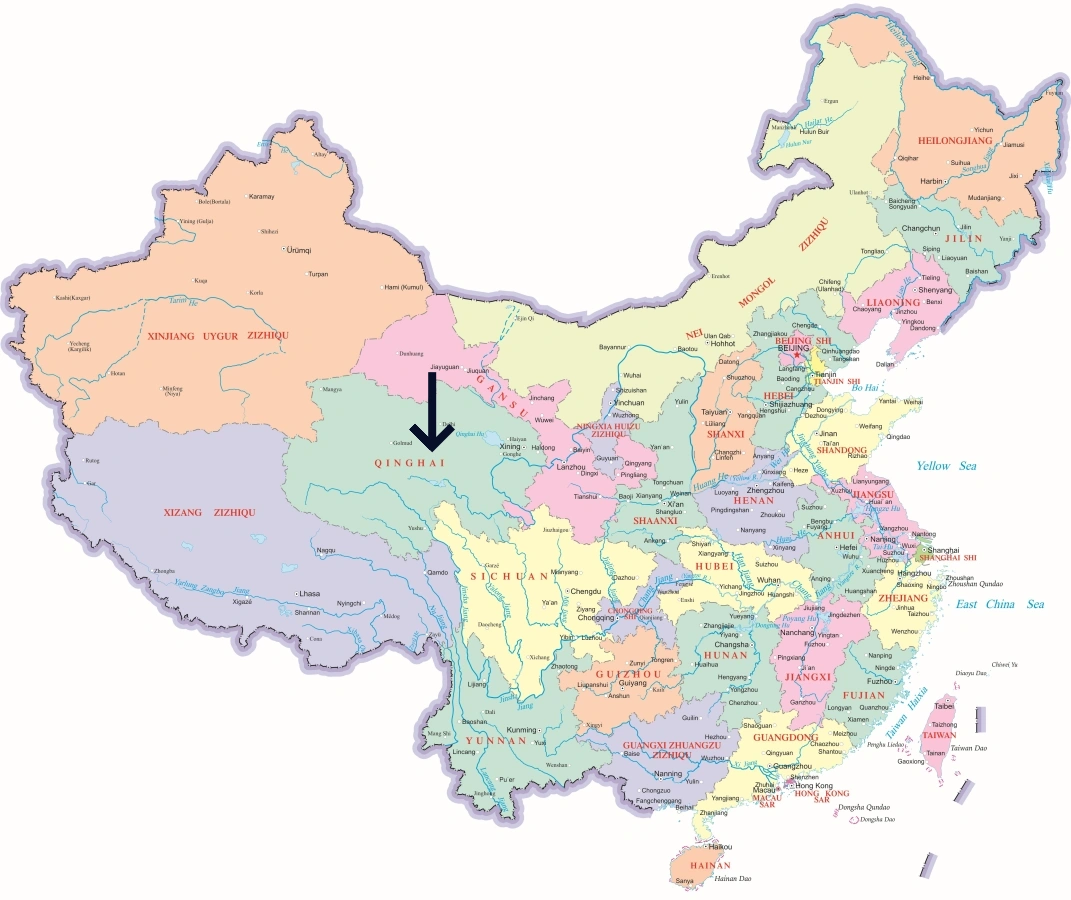
Qinghai has two prefecture-level cities—Xining and Haidong—and six autonomous prefectures, each with its own cultural landscape and natural highlights. Whether you’re seeking sacred mountains, Buddhist heritage sites, or remote trekking trails, there’s a destination for every type of traveler.
While Xining and Haidong provide urban comfort and easy transport, the surrounding regions such as Yushu, Golog, Huangnan, and Haixi showcase Qinghai’s raw beauty and strong Tibetan influence.
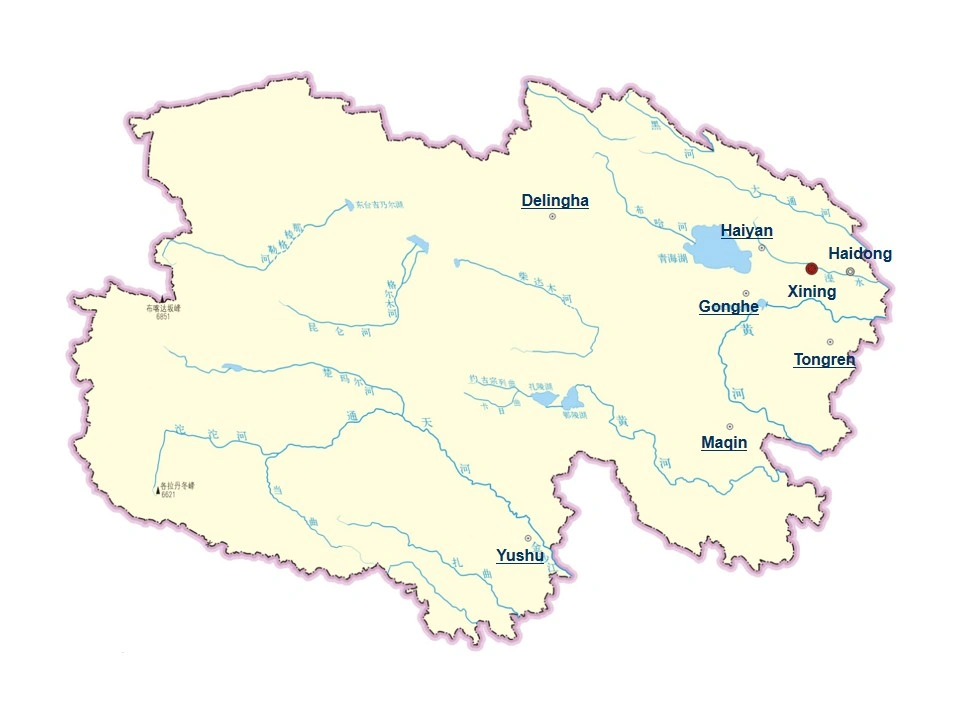
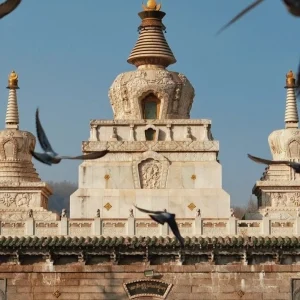
The provincial capital and largest city in Qinghai. It features landmarks like the famous Ta'er Monastery, Dongguan Mosque, and Ma Bufang Mansion. Xining is the gateway to Tibetan culture and the starting point for most overland journeys.
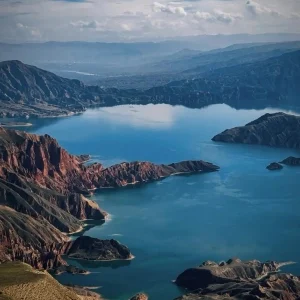
Located on the upper reaches of the Yellow River, Haidong is known for its diverse mix of ethnic groups, especially the Hui and Tu peoples. It's an important corridor between Qinghai and neighboring Gansu Province.
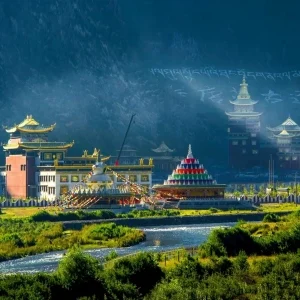
Deep in the plateau, Yushu is rich in Tibetan customs and natural wonders. It includes the Sanjiangyuan National Park and the remote Hoh Xil Reserve, both recognized for their ecological importance.
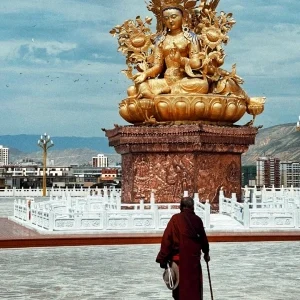
Famous for Regong Art in Tongren and its traditional Tibetan Buddhist monasteries such as Longwu Monastery and Wutun Si, this area blends religion and art in spectacular ways.
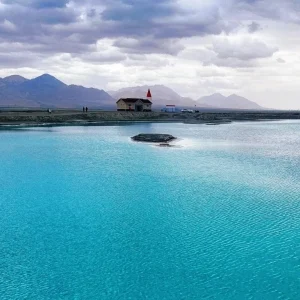
A region of salt flats, desert plateaus, and mysterious landforms. Includes the world-famous Chaka Salt Lake and parts of the Gobi. Often called “China’s Mars.”
Qinghai offers some of China’s most spectacular natural attractions, alongside spiritual sanctuaries that echo with centuries of Tibetan culture. The province rewards travelers with crystal lakes, epic grasslands, and sacred mountains that invite slow, mindful travel.
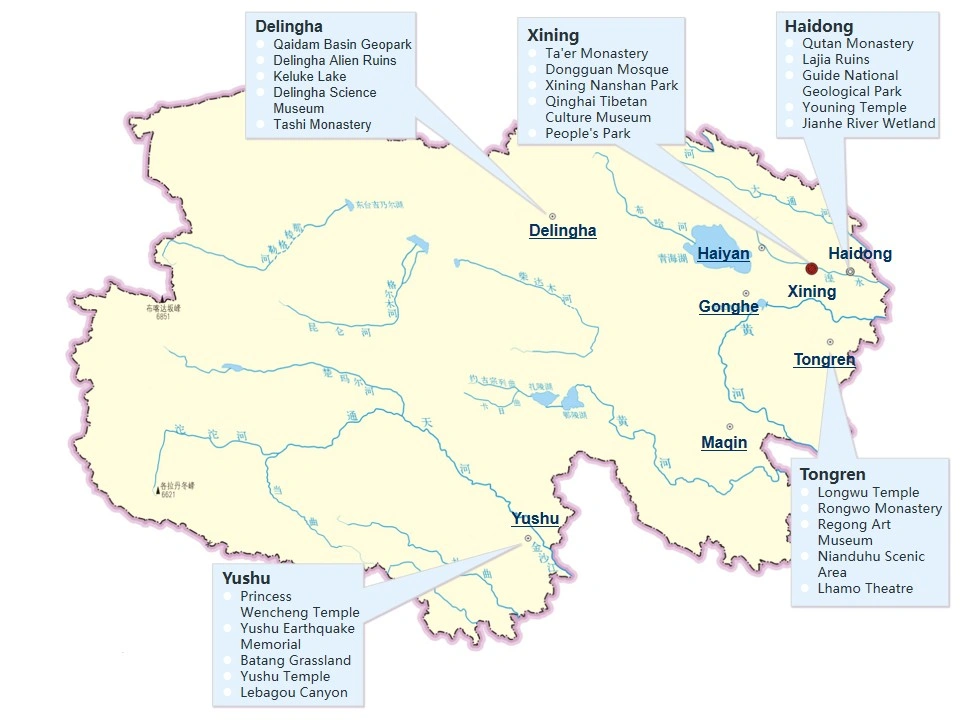
-300x300.webp)
China’s largest saltwater lake. Its vibrant turquoise water and surrounding yellow rapeseed fields create an otherworldly setting for cycling and photography.
-300x300.webp)
Often dubbed “the Mirror of the Sky,” this reflective salt flat creates surreal landscapes perfect for dramatic selfies and dream-like shots.
-300x300.webp)
A major Tibetan Buddhist site and birthplace of Tsongkhapa, the founder of the Gelug sect. It's both an active monastery and a cultural museum.
-300x300.webp)
Come July, fields of golden blooms stretch to the horizon, set against snow-capped peaks. A must-see for nature lovers and photographers.
-300x300.webp)
A UNESCO World Heritage Site, this vast protected area shelters endangered species like the Tibetan antelope in a remote, rugged setting.
-300x300.webp)
A sacred mountain range full of glacial lakes and untouched valleys. A spiritual retreat for hikers and meditation enthusiasts.
-300x300.webp)
The birthplace of the famous Chinese folk song “In That Distant Place,” this grassland offers horseback rides, herder culture, and stunning sunsets.
Qinghai cuisine blends Tibetan, Hui Muslim, and Han Chinese culinary traditions. Expect rich broths, handmade noodles, yak-based dishes, and hearty flavors that match the altitude. The food here tends to be salty and spicy—perfect for the cold, dry climate.
-300x300.webp)
A staple made from roasted barley flour mixed with butter tea. Nutty, dense, and highly nutritious—ideal for high-altitude life.
-300x300.webp)
Dried and seasoned yak meat that's chewy and protein-packed. A great road snack or travel souvenir.
-300x300.webp)
A local Hui specialty featuring chewy handmade noodles and braised lamb offal in a savory broth.
-300x300.webp)
Fermented from local yak milk, it's creamy, tart, and often sweetened with sugar or fruit.
-300x300.webp)
Typically boiled and eaten with hands, this is a traditional nomadic dish served with salt and dipping sauces.
-300x300.webp)
A refreshing street snack with wheat starch noodles, vinegar, chili oil, and garlic—perfect for summer.
Qinghai spans approximately 720,000 square kilometers, making it the fourth-largest province in China. The population is around 5.8 million. Below is a breakdown of area and population by region:
Note: The province is sparsely populated, and distances between towns are large. Travel planning is essential.
Qinghai has a high-altitude continental climate. Days are sunny but temperatures can vary wildly between day and night. Summers are cool, winters are harsh, and UV rays are intense. Below is a month-by-month guide:
Best travel months: May to October. July and August are peak season for Qinghai Lake and alpine scenery.
Major cities and prefectures in Qinghai use the following postal and telephone area codes:

 English (US)
English (US)